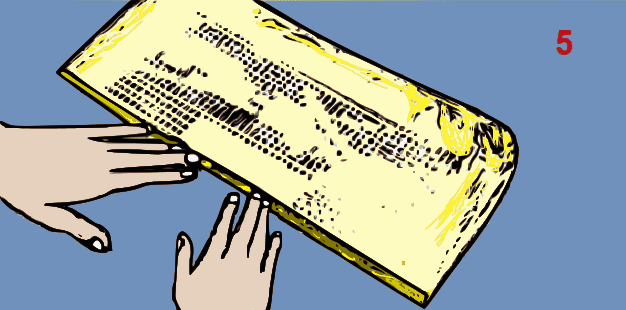Decoding 'fai Khadra': Exploring The Many Meanings Of 'fai' In Technical Fields
Have you ever stumbled upon a symbol or an acronym in a technical document and felt, well, a little puzzled? It's almost like trying to read a secret code, isn't it? That feeling, where a simple sound or a few letters could mean something entirely different depending on where you see them, is actually pretty common. We're going to take a look at something that sounds a bit like "fai khadra" and unpack what "fai" really means across a couple of really important areas. So, if you've been curious about these kinds of puzzles, you're in just the right place to figure some things out.
You know, it's rather fascinating how a single sound, like "fai," can point to such varied concepts. Sometimes, it brings to mind a very specific Greek letter, one that pops up all over the place in science and engineering. Other times, that very same sound, or perhaps its capitalized form, points to a crucial process in manufacturing, something that helps make sure products are made just right. It's truly a testament to how language, especially in specialized fields, can be quite flexible, isn't it?
This article is going to help clear up some of that potential confusion. We'll explore the two main interpretations of "fai" that come up a lot, giving you a clearer picture of what they mean and why they matter. So, if you've seen the Greek letter Phi (Φ) or heard about FAI in a factory setting, we're going to go over all of that. It's about getting a better grasp on these pieces of information, really, so you can feel more confident when you come across them again. It’s a bit like getting the inside scoop, in a way.
Table of Contents
- The Enigmatic "fai": More Than Just a Sound
- FAI in the World of Production: First Article Inspection
- Why These "fai" Concepts Hold Weight
- Frequently Asked Questions About "fai"
The Enigmatic "fai": More Than Just a Sound
When someone says "fai," especially in a setting that deals with numbers or measurements, they are very, very often talking about a particular Greek letter. This letter, which is the 21st in the Greek alphabet, comes in two forms: a big one, Φ, and a smaller one, φ. It's pretty widely used in a bunch of different fields, so knowing what it means is, you know, actually quite helpful.
What is Phi (Φ, φ) and How Do We Say It?
So, the letter we're discussing, Φ or φ, is known as Phi. The way you say it, according to the international phonetic alphabet, is /fai/. It's that sound, "fai," that often gets people curious. It’s not just a random noise; it's the specific pronunciation for this Greek character. This pronunciation is, in some respects, universally accepted in scientific and engineering circles, which helps a lot with clear communication across different places.
Phi in Action: Its Many Roles
This little letter, Phi, has a lot of jobs. One of its most common uses, especially in drawing up plans or in engineering talk, is to show the diameter of a circle. You might see it written like ΦO or ΦA=30mm. This is a very direct way of saying "the diameter of circle O" or "the diameter of circle A is 30 millimeters." It's a quick and easy way to get that piece of information across, without having to write out a whole lot of words, which is pretty useful when you're working on something that needs to be precise.
But that's not all Phi does, not by a long shot. It also stands for magnetic flux, which is a concept that has to do with magnetic fields, and it’s a big deal in physics and electrical engineering. Then there’s its use for angles; you know, when you’re talking about how much something turns or tilts, Phi can be the symbol for that. It also shows up when people are talking about the power of a lens, like in glasses or cameras, which is called lens focal power. And, rather interestingly, it can even represent the flow of heat, something called heat flux. So, you see, it’s quite a versatile symbol, doing a lot of different jobs depending on the context, which is kind of cool, actually.
Getting Phi Onto Your Screen
You might be wondering, how do you even type this Φ symbol? It’s not on your regular keyboard, is it? Well, there are a few ways, which is good to know. If you're using a program like Word or Excel, you can usually go to the "Insert" menu, then find "Symbol," and then look for "Basic Greek" characters. That’s a pretty straightforward way to get it done. Another method, if you’re comfortable with number codes, is to hold down the Alt key and then type 42677 on your numeric keypad. Most modern typing programs also have a symbol function built right in, so you can often just type "phi" and it will suggest the symbol for you, which is very convenient, honestly.
Phi Versus Ø: A Quick Look
It’s worth mentioning that while Φ (Phi) is a Greek letter, there’s another symbol that looks a bit similar but is totally different: Ø. This Ø, with a line through it, isn’t Greek at all. It actually comes from languages like Danish and Norwegian, which is pretty interesting, isn’t it? Its sound is also different, more like the "o" in the English word "word." So, even though they might look a little alike at first glance, they have completely different origins and meanings, which is something to keep in mind, especially when you're looking at technical drawings or documents.
FAI in the World of Production: First Article Inspection
Now, let’s shift gears a little bit. When you hear "FAI" in a factory or manufacturing setting, it’s not about Greek letters at all. In this context, FAI stands for "First Article Inspection." This is a really important process in making sure things are built correctly, right from the start. It’s basically a thorough check of the very first product, or the first few products, that come off a production line. It's a way to confirm that everything is working as it should be, and that the product meets all the required specifications, which is pretty vital for quality, you know.
What Exactly is FAI?
So, FAI, or First Article Inspection, is a detailed check. It’s not just a quick glance; it’s a full-on examination of the first item or items produced. Think of it as a checkpoint. This inspection makes sure that the manufacturing process is set up correctly and is capable of making products that fit all the design requirements. It's a way of catching any potential problems really early on, before a whole lot of products are made incorrectly. This is something that holds a lot of weight in keeping production smooth and efficient, honestly.
When and Why FAI Happens
FAI usually takes place at very specific times in a factory’s operation. For example, when a brand-new product is being made for the very first time, they’ll do an FAI. This is often called a "new product trial production." It’s also done after a piece of equipment has been adjusted or changed, just to make sure those changes haven’t messed anything up. Basically, any time there’s a significant change to the production setup, an FAI is a good idea. It helps prevent bigger issues down the line, which is pretty smart, if you think about it.
The Purpose Behind FAI
The main point of FAI is to confirm that the production process can consistently make products that are up to snuff. It’s about verifying that the initial setup, the tools, the materials, and the methods all come together to produce something that matches the design perfectly. By checking the first few items so carefully, companies can head off potential quality problems. This means fewer defects, less wasted material, and a generally smoother production flow. It’s a foundational step for quality control, you know, really laying the groundwork for good products.
FAI and Process Capability: A Brief Connection
You might hear FAI mentioned alongside something called CPK, which stands for Complex Process Capability Index. While FAI is about inspecting the first pieces, CPK is a measure of how well a process can consistently produce products within certain limits. FAI helps confirm that the process is *initially* capable, and CPK helps track that capability *over time*. So, in a way, FAI is like the initial stamp of approval for a process’s setup, while CPK is about its ongoing health. They work together to ensure quality, which is pretty neat, actually.
Measuring Success with FAI
In a factory, they often talk about something called "first pass yield." This is basically the number of good products you get out of the total number you started with at a particular step, like "合格数/总数." When you have multiple steps in making a product, you can figure out the first pass yield for each step. Then, if you multiply all those individual step yields together, you get the overall first pass yield for the entire product. FAI is a critical part of this because it helps make sure that the very first step, or the very first run, is as close to perfect as possible, setting a good tone for the rest of the production. It’s a pretty direct way to see how well things are going, honestly.
Why These "fai" Concepts Hold Weight
Understanding these different meanings of "fai" is pretty important, actually, especially if you're working in or learning about technical fields. Knowing that Φ means diameter or magnetic flux, and that FAI is about inspecting the first product, helps prevent a lot of mix-ups. In engineering and manufacturing, being precise with your terms and symbols is absolutely key. A small misunderstanding can lead to big problems, like parts not fitting together or products not working as they should. So, getting these definitions straight is a big step towards clear communication and avoiding costly errors, which is something everyone wants, right?
The role of FAI in modern manufacturing, for instance, can’t really be overstated. It’s a fundamental part of quality assurance. By catching issues at the very beginning of a production run, companies can save a huge amount of time, money, and resources. It’s a proactive approach to quality, rather than a reactive one. This focus on getting things right from the get-go is what allows for efficient, high-quality production on a large scale. It's pretty much about building trust in the products you make, which is a very big deal for any business, you know.
And when it comes to symbols like Phi, their consistent use across different disciplines means that engineers, scientists, and technicians all speak a common language, even if they're from different countries. This shared understanding makes collaboration and innovation so much easier. So, while the sound "fai" might seem simple, the concepts it represents are deeply embedded in how we design, build, and measure the world around us. It's a bit like a secret handshake for those in the know, in a way, that helps keep everything moving along smoothly. Learn more about technical symbols on our site, and link to this page ISO standards for technical drawings.
Frequently Asked Questions About "fai"
Here are some common questions people often have about the different uses of "fai":
What is the difference between the Greek letter Phi (Φ) and the symbol Ø?
Well, you know, the Greek letter Phi, which is Φ (big) or φ (small), is a symbol from the Greek alphabet and is pronounced "fai." It's used in science and engineering for things like diameter or magnetic flux. The symbol Ø, on the other hand, is not Greek at all; it's a letter from languages like Danish and Norwegian, and it has a different sound, more like the "o" in "word." So, they come from totally different places and mean different things, even if they look a little bit alike, which is pretty interesting.
Why is FAI (First Article Inspection) so important in manufacturing?
FAI is, actually, really important because it’s a detailed check of the very first product or products made during a production run. It helps make sure that the entire manufacturing process is set up correctly and can consistently produce items that meet all the necessary requirements. By doing this early on, companies can catch any potential problems before a lot of products are made incorrectly, which saves a huge amount of time, money, and materials. It's basically about getting things right from the start, you know, which is key for quality.
How do I type the Phi (Φ) symbol on my computer?
Typing the Phi symbol is, thankfully, pretty straightforward. If you're using a program like Microsoft Word or Excel, you can usually go to the "Insert" tab, then click on "Symbol," and then look for "Basic Greek" characters in the list. Another way, if you’re using a keyboard with a numeric pad, is to hold down the Alt key and then type 42677. Most modern typing software also offers a symbol feature where you can often just type "phi" and it will suggest the symbol for you, which is very convenient, honestly.

Le coordinate di latitudine e longitudine nel nuovo Google Maps

Lavori Creativi Fai Da Te | An Online Help: Come Realizzare Un

Lavori Creativi Fai Da Te | An Online Help: Little Ghost | Piccolo